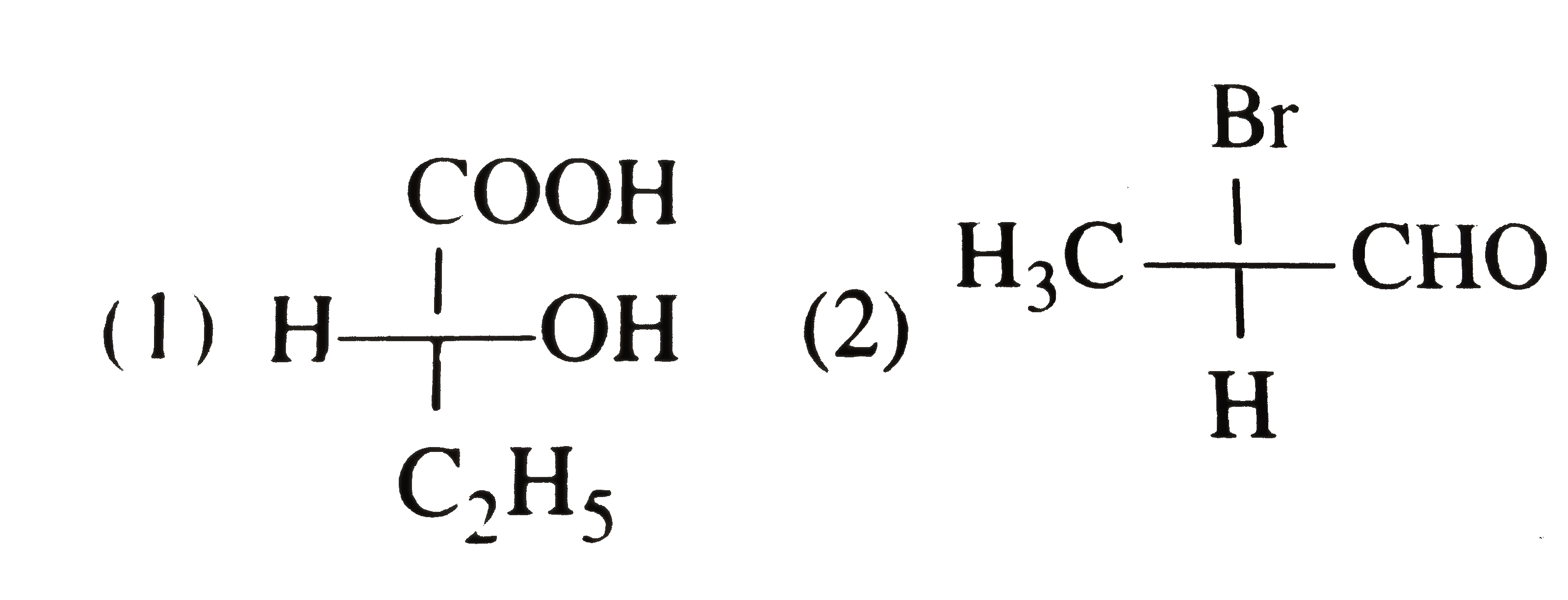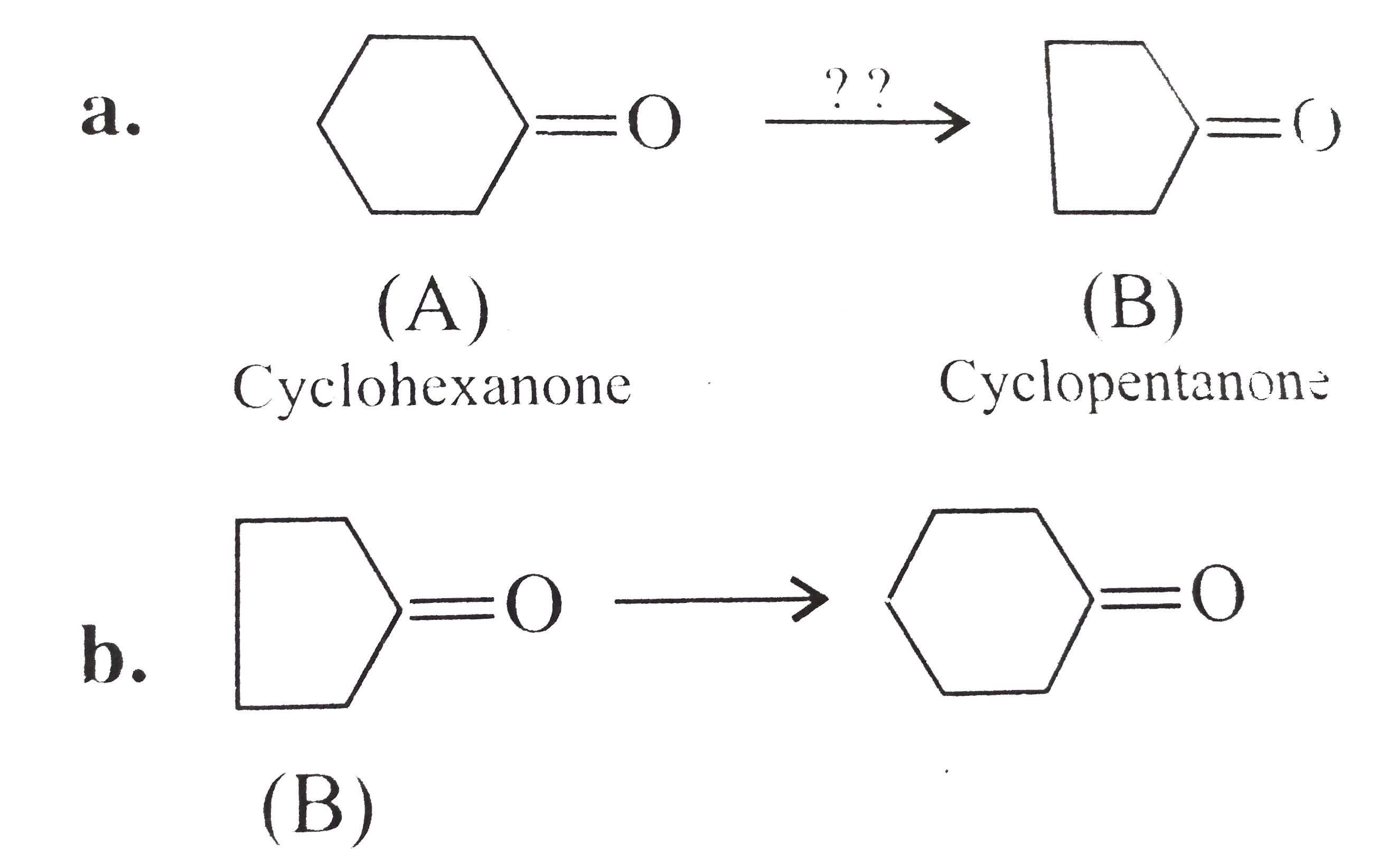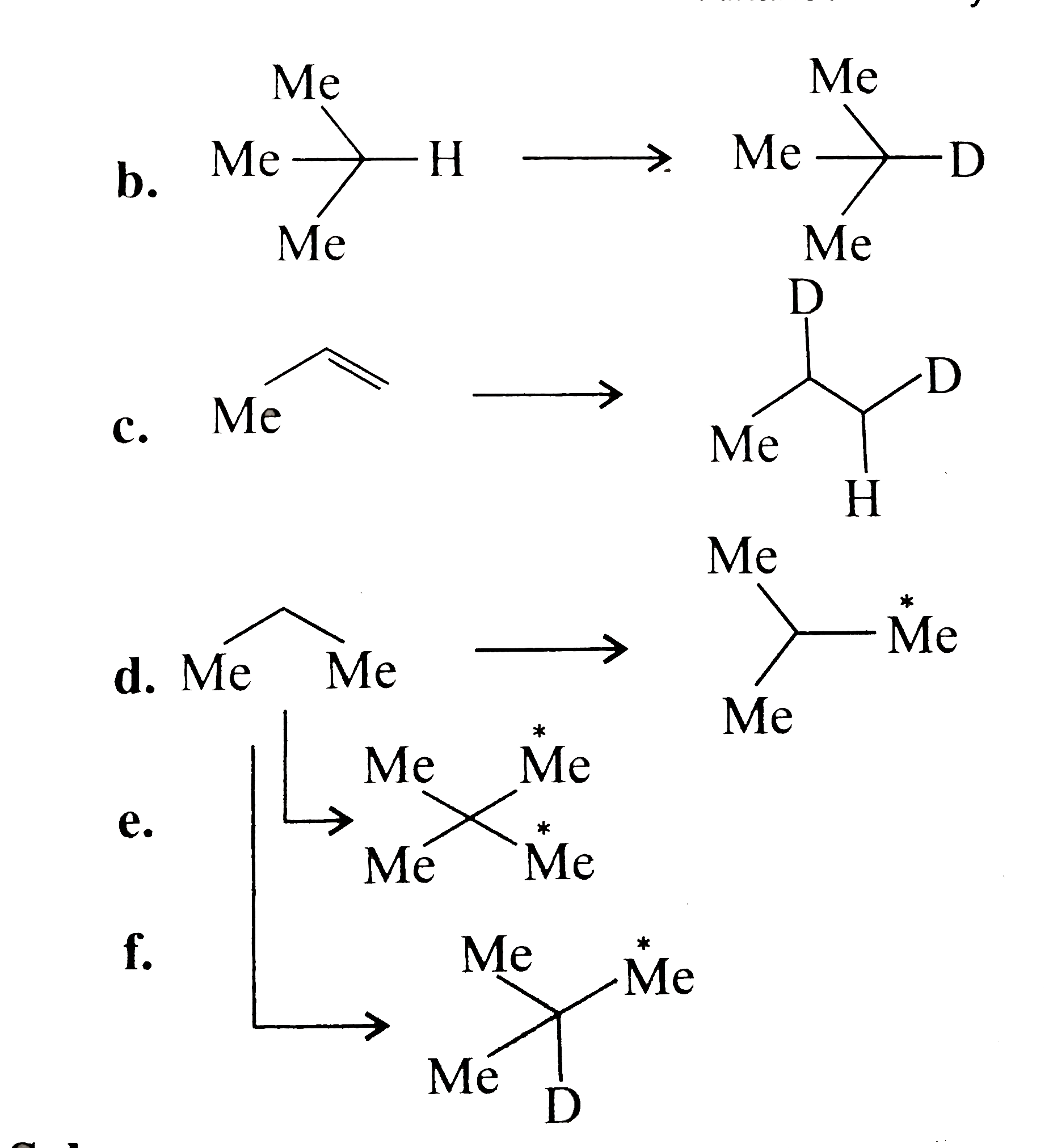a. Convert cyclohexyl amine into cyclopentyl amine .
b. Convert cyclohexene oxide into aminocyclohexamol.
Step-by-Step Solution
1. Starting Material: Begin with cyclohexyl amine (C6H11NH2).
2. Reaction with HNO2: React cyclohexyl amine with nitrous acid (HNO2). This will convert the amine group (-NH2) into a hydroxyl group (-OH), yielding cyclohexanol (C6H12O).
Equation:
C6H11NH2+HNO2→C6H12O+N2+H2O
3. Dehydration with H2SO4: Treat cyclohexanol with concentrated sulfuric acid (H2SO4) to remove a water molecule, forming cyclohexene (C6H10).
Equation:
C6H12OH2SO4,Δ−−−−−−→C6H10+H2O
4. Oxidation with KMnO4: React cyclohexene with potassium permanganate (KMnO4) in an acidic medium to form a dicarboxylic acid (C6H8O4).
Equation:
C6H10+KMnO4→C6H8O4
5. Decarboxylation with BaO: Heat the dicarboxylic acid with barium oxide (BaO) to remove one molecule of carbon dioxide (CO2) and one molecule of water (H2O), yielding cyclopentanone (C5H8O).
Equation:
C6H8O4BaO,Δ−−−−→C5H8O+CO2+H2O
6. Amine Formation: React cyclopentanone with ammonia (NH3). The nitrogen from ammonia will replace the oxygen in the carbonyl group, resulting in the formation of an imine intermediate.
Equation:
C5H8O+NH3→C5H10N+H2O
7. Reduction with H2/Pt: Finally, reduce the imine with hydrogen gas (H2) in the presence of platinum (Pt) catalyst to yield cyclopentyl amine (C5H11NH2).
Equation:
C5H10NH2,Pt−−−→C5H11NH2
Part b: Conversion of Cyclohexene Oxide to Amino Cyclohexanone
1. Starting Material: Begin with cyclohexene oxide (C6H10O), also known as oxirane.
2. Reaction with NaN3: React cyclohexene oxide with sodium azide (NaN3) in the presence of water. This will lead to the formation of an azide compound.
Equation:
C6H10O+NaN3+H2O→C6H10N3O
3. Reduction with H2/PtO: React the azide compound with hydrogen gas (H2) in the presence of platinum oxide (PtO) to convert it into aminocyclohexanone (C6H11NO).
Equation:
C6H10N3OH2,PtO−−−−→C6H11NO
Final Products
- Part a: Cyclopentyl amine (C5H11NH2)
- Part b: Amino cyclohexanone (C6H11NO)
C6H11NH2+HNO2→C6H12O+N2+H2O
C6H12OH2SO4,Δ−−−−−−→C6H10+H2O
C6H10+KMnO4→C6H8O4
C6H8O4BaO,Δ−−−−→C5H8O+CO2+H2O
C5H8O+NH3→C5H10N+H2O
C5H10NH2,Pt−−−→C5H11NH2
C6H10O+NaN3+H2O→C6H10N3O
C6H10N3OH2,PtO−−−−→C6H11NO
- Part a: Cyclopentyl amine (C5H11NH2)
- Part b: Amino cyclohexanone (C6H11NO)
Topper's Solved these Questions
- ORGANIC COMPOUNDS WITH FUNCTIONAL GROUPBOOK - CENGAGE CHEMISTRY ENGLISHCHAPTER - ORGANIC COMPOUNDS WITH FUNCTIONAL GROUPEXERCISE - Exercises Concept Application
13 Videos
- ORGANIC COMPOUNDS WITH FUNCTIONAL GROUPBOOK - CENGAGE CHEMISTRY ENGLISHCHAPTER - ORGANIC COMPOUNDS WITH FUNCTIONAL GROUPEXERCISE - concept application 4
1 Videos
- ORGANIC COMPOUNDS WITH FUNCTIONAL GROUPBOOK - CENGAGE CHEMISTRY ENGLISHCHAPTER - ORGANIC COMPOUNDS WITH FUNCTIONAL GROUPEXERCISE - Solved Examples
12 Videos
- NUCLEAR CHEMISTRYBOOK - CENGAGE CHEMISTRY ENGLISHCHAPTER - NUCLEAR CHEMISTRYEXERCISE - Archives Subjective
13 Videos
- P-BLOCK GROUP 15 ELEMENTS - THE NITROGEN FAMILYBOOK - CENGAGE CHEMISTRY ENGLISHCHAPTER - P-BLOCK GROUP 15 ELEMENTS - THE NITROGEN FAMILYEXERCISE - Exercises Archives (Subjective)
28 Videos
Similar Questions
Knowledge Check
Ethyl cyanide (A) can be converted to ethyl amine (B) by :
AASn/HCl−−−−→BBAH3O+−−−→NH3/Δ−−−−→KBr∅Δ−−−→BCALiAlH4−−−→BDboth (a), (c) are correct
How will you convert ethyl amine to ethyl alcohol ?
View SolutionWhich named reaction is used to convert amides into amines
View Solutiona. Convert Wedge formula to Fischer formula.

b. Convert Fischer formula to Wedge formula.

View SolutionHow will you convert propanoic acid to ethyl amine ?
View SolutionConvert the following :
(A) to (B)

View SolutionConvert the following:
a.
b.
View Solution
Convert 1-chlorobutane (A) to valeric acid (B).
View Solution
